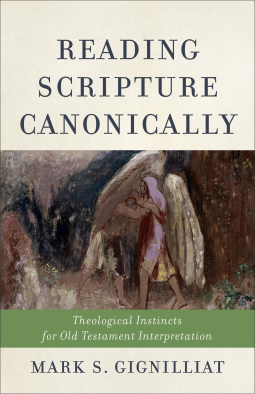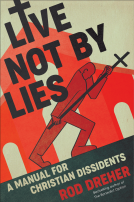
Reading Scripture Canonically
Theological Instincts for Old Testament Interpretation
by Mark S. Gignilliat
This title was previously available on NetGalley and is now archived.
Send NetGalley books directly to your Kindle or Kindle app
1
To read on a Kindle or Kindle app, please add kindle@netgalley.com as an approved email address to receive files in your Amazon account. Click here for step-by-step instructions.
2
Also find your Kindle email address within your Amazon account, and enter it here.
Pub Date Jun 18 2019 | Archive Date Jun 21 2019
Baker Academic & Brazos Press | Baker Academic
Talking about this book? Use #ReadingScriptureCanonically #NetGalley. More hashtag tips!
Description
Advance Praise
“Drawing beautifully on Childs and Sheppard, Gignilliat concludes that for the canon, fixity is a pole not a stage. Along the way, the author discusses what links Gunkel to von Rad and what was at stake between Lagarde and Kahle. Hence this work does dual service as a textbook and as a serious spur to scholarly thinking. Gignilliat is unafraid to step beyond ‘biblical studies’ into a theology that is constructive for lives and churches. The Word finds a body in the text as witness to Him as having touched the lives of people, a far cry from Edwin Muir’s caricature of a ‘religion of the book.’”—Mark W. Elliott, professor of theology, University of Glasgow
Available Editions
| EDITION | Other Format |
| ISBN | 9780801049118 |
| PRICE | $24.00 (USD) |
| PAGES | 144 |
Links
Average rating from 4 members
Featured Reviews
 Christian W, Reviewer
Christian W, Reviewer
A review of “Reading Scripture Canonically” by Mark S. Gignilliat.
The relationship between the Old Testament (sometimes Hebrew Bible) and the New Testament has been a long conversation in the church. 2000 years later, we as a body are still exploring the relationship between the two, such as the proper way to read Christian theology out of and into the Hebrew Bible and how to interpret passages in light of Christ’s incarnation. Mark Gignilliat enters the conversation with an insightful look into the canonical shape of the Bible and how it informs our interpretation of the Old Testament.
Goals of the Book: Broadly, Gignilliat wants to help the reader understand a canonical approach to the Scriptures while focusing it on particular theological issues. To do so, the book is split into two major parts. The first deals with the material character of the Old Testament. Broadly, Gignilliat summarizes the questions as: “What is the Old Testament? How does its place in the Christian Bible impact our reading of it?” The second portion looks at the doctrine, and reality, of the Trinity, within the Old Testament. “Does the Triune character of God flow from the Old Testament’s own internal logic and claims, or is it simply a later Christian imposition on the ancient text in Hebrew or Greek form?”
“How and why should we read the material of Scripture-words, sentences, paragraphs, books, and so forth-in conjunction with Scripture’s theological subject matter?”
Along the way, Gignilliat raises other interesting questions: “What does the appeal to canon entail theologically? Second, when we speak of Scripture broadly or of the Old Testament in particular, what is it?” This book probably puts to words questions we have asked before, in a different form.
Why Should You Care?: The relationship between the Old and New Testaments has caused a stir in church history since Jesus’ ministry in Jerusalem. While we as a church struggle to interpret that relationship in prayer, interpretation, and liturgy, we are forced again and again to reckon with our understanding of the way that the Bible works together. The average Christian (well, a lot of Christians, really) might also struggle to explain how the Old Testament displays the Trinity as well, outside of some proof-texts. This book uses philosophical, lexical, and theological explanations to explain and defend how the Trinity is the central message of the Old Testament as well as the New.
Book’s Strengths and Weaknesses: Gignilliat does a great job of answering the questions that he initially asks. The book could easily run too long or too convoluted, but some great editing and strong chapter divisions make sure that the book stays focused on each chapter’s main question. I felt overwhelmed at the beginning by how many questions were being raised, but I felt my fears dissipate as I continued to read.
“Since God is the subject matter of Scripture, it goes without saying that its textual form cannot exhaust the subject matter. In part, the diversity of voices within Scripture originate in the richness of its main character and point of interest: God. At the same time, the material form of Scripture itself resists exhaustive treatment, and that despite the enormous amounts of interpretive work given to it over the centuries. Scripture’s subject matter [God] is infinite, yet its material form is finite. Nevertheless, the material form of Scripture, finite as it is, is a flower whose budding never ceases in its faithful reception and reading.”
Most unfamiliar with the Old Testament, and Trinitarian theology, would find the central claims of this book to be both helpful and illuminating. I personally found this book to be engaging and relatively readable. It is not written with a popular audience in mind, I don’t think, but that doesn’t mean it is entirely inaccessible to the masses. That being said, it does freely use scholarly terms without hesitation or explanation, so there might be a bit of an entry barrier to a lot of readers.
Broadly, Brevard Childs influences this book from the start to the finish. Every chapter quotes him many times, and I was excited to see someone take a closer look at his approach and use it to more specifically focus on more narrow issues. Most conservative Christian readers already, somewhat loosely, pattern their own readings after Brevard Childs’ model, so I think most would find it helpful to have that model codified to solidify their own reading habits. Let me explain.
Most conservative readers wouldn’t label their reading as such, but we broadly follow a canonical reading against a source critical reading. The book provides helpful definitions and explanations of canonical models of reading the Scriptures compared to source critical models to help elucidate my claim. Source critics try to pull the texts apart to find some sort of history behind them to make interpretations. This can lead to pulling Genesis, for example, into four major “sources”, and reading those sources against one another. The canonical reading is only concerned with the final shape of the text, unbothered by the appearance of source texts or multiple editors. In fact, a canonical reading accepts that there might have been many editors, but they hid themselves in the texts so that Israel’s history was visible rather than their work. The book then shows the benefit of canonical readings.
The canonical interpretation method also leads to extremely valuable exegetical insights. For example, we might be tempted to read Isaiah 7 on its own (Gignilliat calls this an “atomized” reading). But when we read the passage in light of the Emmanuel texts of 8-11, our eyes are opened to a wider understanding of the passage. This wider reading helps us understand, more broadly, how Isaiah’s prophecies relate to the New Testament.
“Far from cutting off the exegetical enterprise, the canonical approach provides a theological framework and green light for continued reading of the Holy Scripture in anticipation of hearing God’s Word once again.”
It also helps us understand how the Old Testament texts inform one another. Gignilliant shares some insights on how the form of the texts, and their internal logic, can shed greater light in intertextual readings. For example, he shows how the ending of Amos, focusing on Edom, prepares us for the oracle against Edom in Obadiah. Or, we can look at theological threads, showing how God’s revelation of himself in Exodus 32-34 informs the Minor Prophets throughout the corpus.
All in all, I found this book to be fairly valuable, providing a wealth of insights and thoughts into reading the Scriptures as a whole canon. You can read more about the volume here, on Baker Publishing House’s website. You can also pre-order the book on Amazon here. (I received a copy on NetGalley for review; I was not required to give a good review, only an honest one.)
 Jimmy L, Reviewer
Jimmy L, Reviewer
This book was written as an introduction to what is called the canonical approach of the Bible. The approach is known best by its advocate Brevard Childs. I have previously read the author’s earlier book titled A Brief History of Old Testament Criticism and have found that work extremely helpful. In this present book it is less a history of Old Testament Criticism as it is a short introduction to one method of biblical criticism: Canonical criticism. By criticism I don’t mean complaining or critiquing the Bible as it is a means of coming to understand the Bible rigorously.
The book is divided into two parts. Part 1 is on “Scripture's Material Form.” This section consists of four chapters. Part 2 on the other hand is on “Scripture's Subject Matter” and consists of two chapters. Before the main body of the book there is an introduction and also an epilogue.
Part 1 is largely on what is the canonical approach and also the relationship of the canonical approach to other discipline and other aspect of the Scripture. For example chapter one is titled “Scripture and Canon” and focuses on the issue of how does one understand canon. This of course is important if we are going to have a canonical approach to the Scriptures. Chapter two is on the discussion of the final form of the Scripture we have while chapter three is on canonical intentionality and chapter four is on the canon in relations to textual criticism. My favorite chapter in part 1 is actually chapter four on textual criticism. I really enjoyed the author’s discussion about the the various ancient translations of the Old Testament, the Greek translation of the Old Testament called the Septuagint and the role of the Septuagint in the study of Scripture, and also role in the Church today as opposed to the acceptance of the Masoretic text. I thought the best discussions of the book happened here.
Part 2 titled as “Scripture's Subject Matter” is on how the Canonical Approach to the Old Testament will see the Old Testament is about the Trinity. Here the author is quite nuanced in that he’s clarifying he’s not saying that the human authors of the Old Testament had a developed concept of the doctrine of the Trinity but a canonical reading of the Old Testament in various key passages in light of what is to follow in the New Testament yields that certain passages is talking about the Triune God. I thought this part of the book was more disappointing than part 1. For starters the discussion was too brief. It was only two chapters as opposed to the four chapters in part 1. Also after much nuanced statement by the author of what he does and does not mean I felt rather disappointed that he handled only a few verses. Very disappointing to me as I wanted the author to flesh out more robustly from the Scripture what he believe is Scripture’s subject matter. Also I also wonder why the author held his view that the human authors didn’t grasp what they were writing about concerning the Triune nature of God. I wonder why it isn’t possible that instead the Old Testament writers might have some idea of the Trinity in incipient form which of course later in progressive revelation in the New Testament it further flesh out. While it is important to distinguish between the human and divine author of Scripture I think we must not divorced them artificially and the author’s view seem to be approaching the danger of that by insisting the human author didn’t intend on saying something about the Triune nature of God.
If I have a final criticism of the book is that I wished it gave more examples of how the canonical approach gives us deeper insight into the Bible or interpretation of the Bible. The few examples made me hunger for more examples but I felt the author spend too much time on other matters. Also the author spent too much time in my opinion of stating how the canonical approach is compatible with higher criticism, etc. There are times when I read this book I asked myself why should the author and other Christians give so much credence to higher criticism that often have a low view of the Bible. To the author’s credit the final epilogue does call for readers to be faithful to the Bible and a clear statement that the health of the church in contingent on preachers really be faithful to the message and study of the Bible.
NOTE: This book was provided to me free by Baker Academic and Net Galley without any obligation for a positive review. All opinions offered above are mine unless otherwise stated or implied.
 Carl J, Reviewer
Carl J, Reviewer
This book is small, but not for the faint of heart. In a very concise way Gignilliat dives headfirst into discussions about canon and scholarship and so if you aren't somewhat familiar with the works of Brevard Childs and those writing in response to his work on the Old Testament canon. Gignilliat also chooses to go with the more academic language on the issue rather than bring it to a popular level. This isn't a strike against him at all, but it is something that should be considered given the size of the volume which could be a bit misleading to some.
The first two chapters of Gignilliat's book were a bit dry in my opinion, but well worth working through in order to get into the last four chapters. He walks the line well of finding a balance between recognizing and honoring the ancientness and authority of the OT while also finding how it speaks to us as Christians today. Gignilliat does well to show that reading the scripture canonically helps us to better understand the text overall as it reveals, not every bit and piece of the journey that the scripture took, but what the text is trying to say overall about God and who He is.
The last two chapters give an example of how this is done, and Gignilliat has chosen, in my opinion, a difficult task in tackling the topic of the trinity. How do you find the trinity within the OT? Is YHWH the Father, or all three persons of the Godhead? If the trinity is even in the OT, would the authors have known it? Gignilliat does well to flesh this out and find the Godhead in the Jewish scripture while remaining faithful to the text as a whole.
Overall I would recommend this book to anyone with at least a bit of familiarity to discussions about the OT canon and the work of Childs. It's a dense and concise work that feels like a good add-on to much of what has already been established in this area of study.
I received a copy of this book from Netgalley for an honest review.





